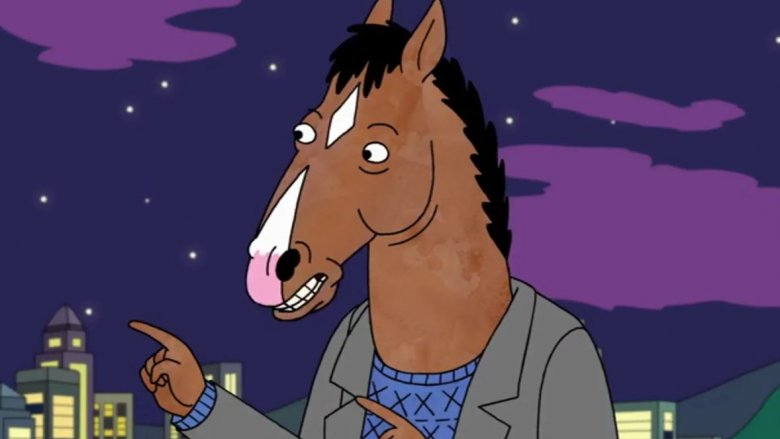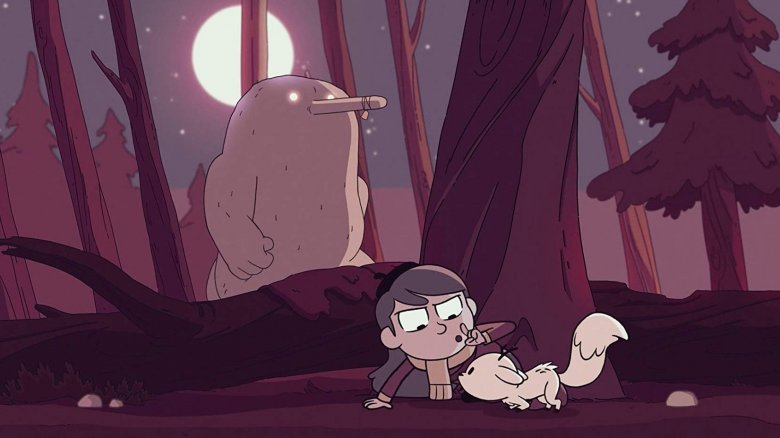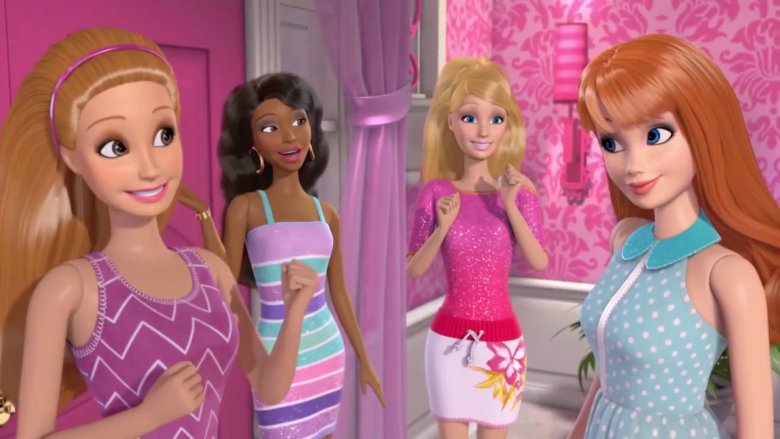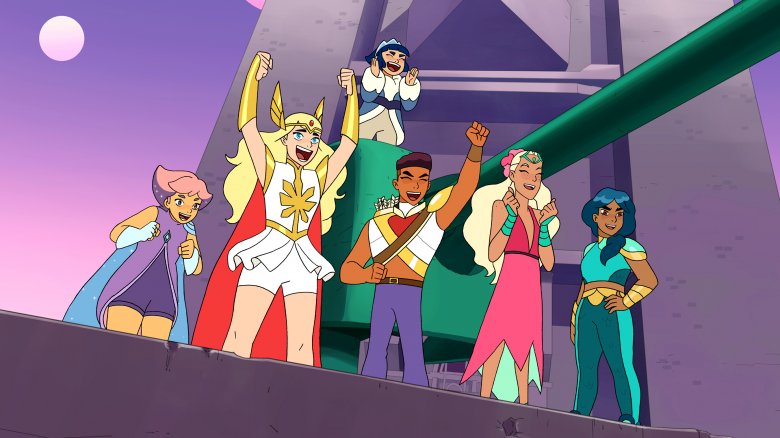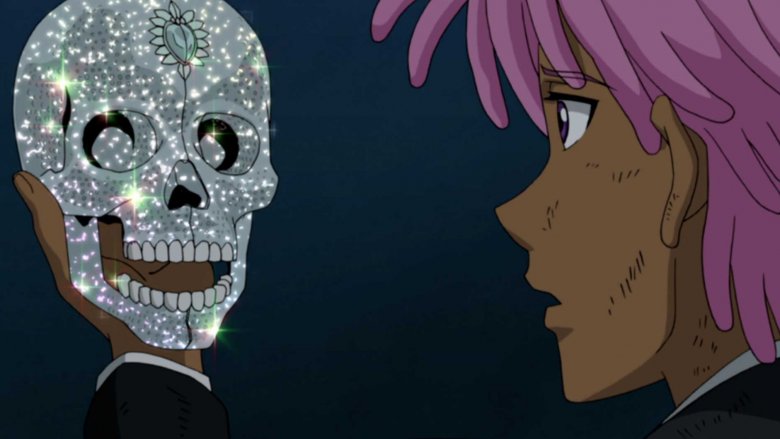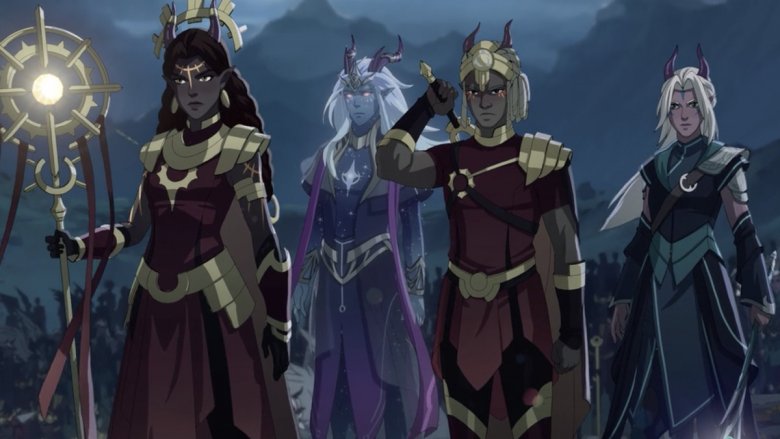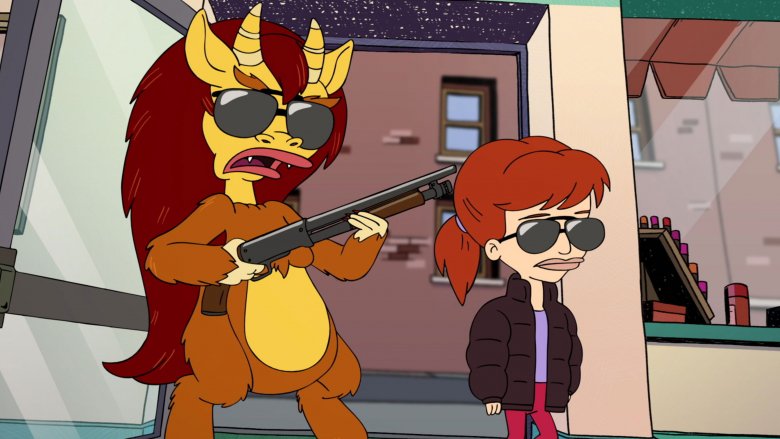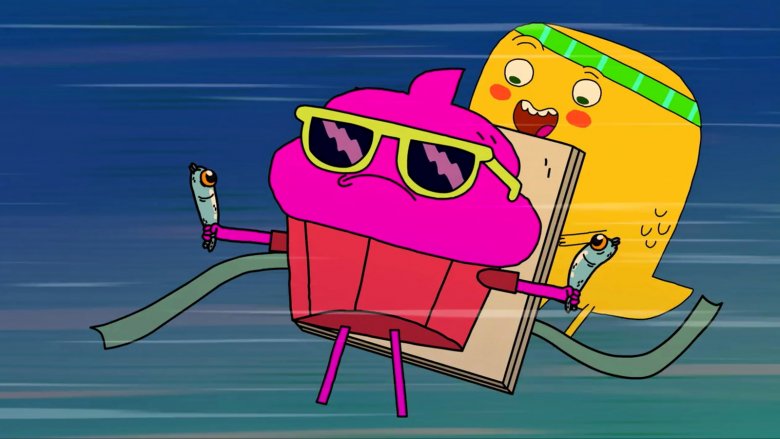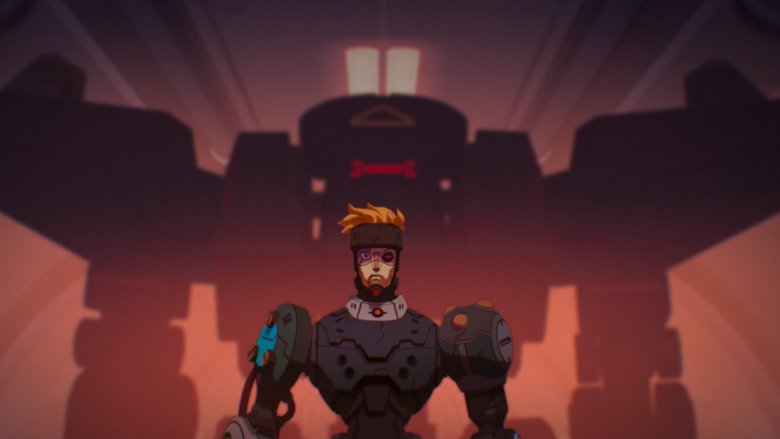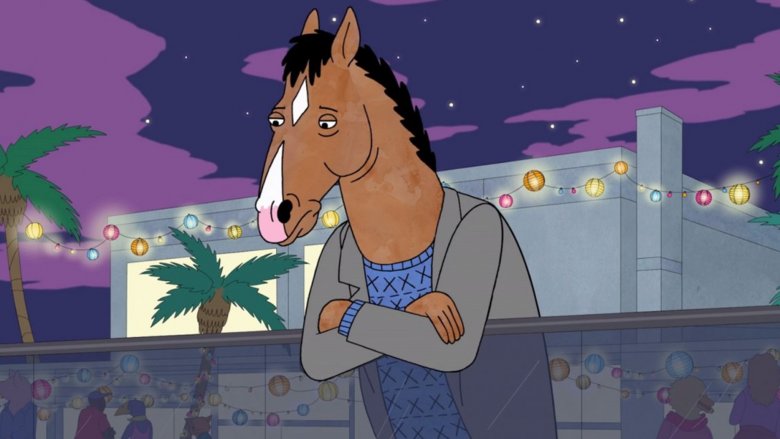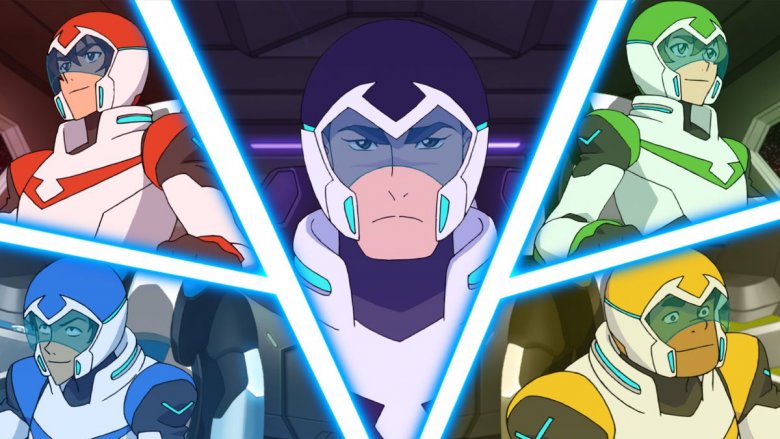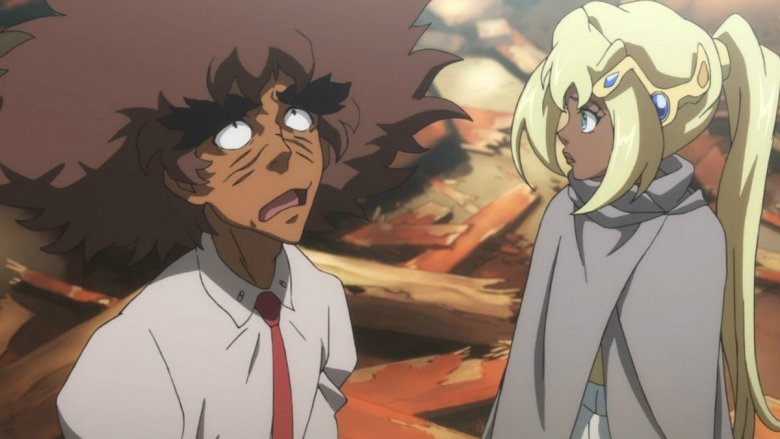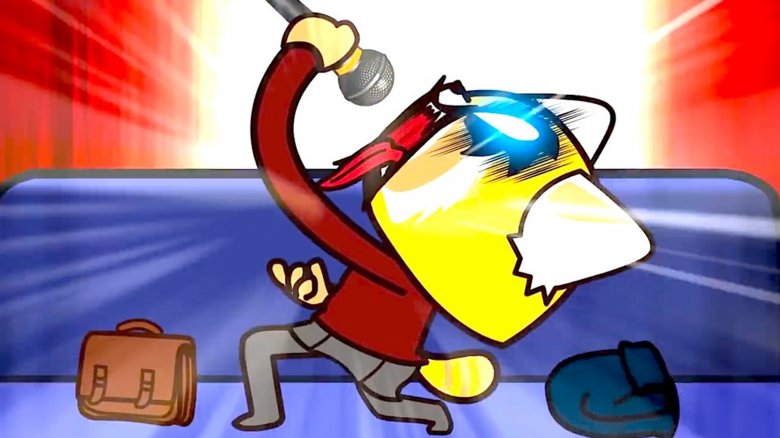Cartoons On Netflix You Should Be Watching
We're living in an unprecedented time for animation. Digital and traditional approaches are weaving together to create fascinating new aesthetics. Stories for all ages are thriving, from the boldest science fiction to the cozily domestic. At this point, it's not odd for an adult to enjoy something animated. Rather, it's strange when an adult doesn't count even one cartoon among the entertainment they enjoy.
Streaming services like Netflix have become an enormous part of animation's new golden age. Not only does the service allow watchers of all ages the ability to revisit childhood favorites, it enables all kinds of bold, new work from creators eager to explore the medium's possibilities. Vivacious reboots of 1980s gems are enthralling audiences new and old alike, while other shows are taking aim at subjects like mental illness, loneliness, and the rotten soul of Hollywood. Even the most traditional cartoons are breaking boundaries as they entertain, educate, and expose children to all that animation is capable of. Join us as we celebrate the best cartoons you should be watching on Netflix, from the dreamiest fantasies to the darkest nights of the soul.
Hilda is a Netflix series about childhood and the magic of nature
Children discovering the wonder of untamed nature makes for classic stories. Anne of Green Gables, Bridge to Terabithia, My Side of the Mountain — all of these timeless tales of bucolic adventure center around kids discovering the outdoors and, subsequently, themselves. Natural environments, be they a redwood forest or a suburban backyard, are often the first places kids are allowed to explore on their own, test their limits, and investigate whatever strikes their fancy. Across time, space, language, and cultures, this is a rich vein of genre no amount of tapping can deplete.
Hilda is a shining example of this tradition. The bold daughter of a single mom, Hilda begins her story out in the boonies, where she spends her days rambling with her pet "deerfox," Twig. Hilda's world contains a potent dose of magic — she plays mediator to giants, makes friends with a pint-sized race of invisible gnomes, and wrangles infant trolls — but ultimately, her story is one of children everywhere, off in a world of meadows, mosses, and mystery. Her life is uprooted when she and her mom must move to the city, and Hilda finds herself confronted with a world that has more concrete than creeks. But this show reaches its apex in this flipped script, as Hilda discovers that wildness exists everywhere. It's not called the urban jungle for nothing, and it's a lesson viewers of all ages will relish.
Barbie: Life in the Dreamhouse is one of the most surreal cartoons ever made
Yes, you read that right. A show with both "Barbie" and "Dreamhouse" is on this list. Is it overwhelmingly pink? Absolutely. Does it feature extended gags about shoes? Oh yeah. Is Barbie her irrepressibly chipper, omnicompetent self? Very much so. Does this all come together to make one of the most charmingly bizarre works of animation currently available? Indisputably.
Barbie: Life in the Dreamhouse embraces the oddness of its premise right off the bat. Structured as a reality show, complete with talking-head confessionals, the characters are animated to look like the dolls they are, with visible seams, joints, and a stiff shine to their hair. If this seems off-putting, it should. The show revels in its own weirdness. Barbie is an expert in, well, everything, with an age no one seems to be able to calculate. Baking is accomplished by throwing uncracked eggs and cartons of milk into glittery pink ovens, which emerge as intricate fantasias of frosting. Midge, created in 1963 and left out of the line for decades, is introduced as a black-and-white, pinafore-wearing goody two-shoes who marvels at her modern friends' ability to bend their arms.
Despite this, the show never mocks Barbie and what she stands for. The surreality of her hundreds of careers, home appliances, and purses are why the show loves her and her friends — and the viewer, for cheering them on every high-heeled step of the way.
She-Ra and the Princesses of Power is brilliant reboot of a classic cartoon
In the world of She-Ra, a princess isn't just a girl with a royal pedigree. She is a protector, a warrior, and a unique part of the planet's delicate ecosystem. Princesses have fabulous magical powers and exotic palaces, sure, but those perks come at the cost of duty, training, and an endless fight against the Horde, who seek to subjugate the planet of Etheria for their own murky ends.
Adora didn't start out as one of the princesses. She was, in fact, a promising young Horde soldier who stumbled upon the sword that transforms her into the formidable She-Ra. Her world crumbles in an instant, enmeshing her in a battle against everything she ever knew. Catra, the sneeringly evil Horde general of the original 1980s series, is now Adora's best friend, curdled into tragic villainy through jealousy, spite, and an inability to understand why Adora left her. Entrapta, once a baddie with a yen for, yes, traps, is now a warmhearted oddball whose love of engineering makes her friends on both sides of the war. Queen Angella, once merely the beautiful queen of Etheria in the '80s She-Ra cartoon, is now a woman struggling to balance the demands of war with the vulnerabilities of motherhood. It's a rich fantasy of a series, each season asking provocative new questions. What does it mean to be a heroine? How does evil manifest, and how should it be defeated? These are the questions She-Ra ponders to stirring and magical effect.
Neo Yokio is must-watch anime
Here's a statement of actual fact: Jaden Smith co-created an anime with Vampire Weekend frontman Ezra Koenig, starring himself, Jude Law, Susan Sarandon, and a whole bunch of other luminaries of the stage, screen, and blogosphere. Yeah. That's a real thing that actually exists, and it's called Neo Yokio.
On the one hand, Neo Yokio is an outright satire. Kaz Kaan is a flippant "magistocrat" who lives in the eponymous city, frittering away his time with his robot butler, fabulous friends, and whatever demons need dispelling. The absurdities of wealth are well-skewered, from caprese martinis to exorcisms performed on Damien Hirst sculptures. One the other hand, it's clearly born from a genuine love of action anime. Kaan hurls pulsing balls of light like Goku, pals around with his buddies like Naruto, and finds courage in the face of fear like, well, every young protagonist of every mainstream anime series.
Neo Yokio is entirely aware of how truly strange it is, to the point of almost basking in its own eccentricity — major names like Steve Buscemi, Steven Fry, and Richard Ayoade all show up as extremely minor character — but it's heart is, like the greatest animated heroes, entirely pure. They don't call it the greatest city in the alternate-timeline, magic-ravaged world for nothing.
The Dragon Prince is a Netflix show that's truly for all ages
"All ages" is a term typically used to indicate a work's intentional audience of young viewers. Theoretically, adults can watch it as well, but they're not likely to love it the way their preschoolers do. To be truly fit for watchers of all ages, a story needs to balance humor with sincerity, morals with momentum, and to do it all in a way that won't bore the youngest, yet remain interesting to the oldest. It's a tremendously difficult balancing act, which makes the successes — Avatar: The Last Airbender, the movies of the Marx brothers, The Lord of the Rings — so remarkable and rare.
The Dragon Prince is one such work of art. Taking place in a complex fantasy world, the story pits its youthful protagonists against a thousand-year-old conflict between humans, elves, and dragons. Loyalties are tangled across lineage and region, made all the more complicated by the fact that this land's magic is historically denied to humans. Visually, the show's blend of computer animation and traditional fantasy aesthetics creates a glittering world in which pristine detail like sparkling skin and multi-eyed beasts are never sacrificed for expedient animation. The Dragon Prince is the best sort of fantasy. It imparts wisdom anyone can appreciate from the lofty climes of magic and myth, accessible to the hardened genre fan and the wide-eyed child alike.
Big Mouth is an awkward, hilarious look at growing up
Middle school is a fraught time period for even the most well-adjusted child. One is not quite a kid any longer, but not yet a teenager. Adult personalities, interests, and values are being shaped, explored, and solidified. Ideally, something is being learned in the classroom. These are the years when so many discover who they will go on to be, and for as weighty and meaningful as all that sounds, middle school is often, more than anything, an exercise in sheer, consuming embarrassment.
Big Mouth never loses sight of this, and that is its greatest strength. As it chronicles the lives of its motley band of middle schoolers, it finds the joy and tenderness in first romance, pubescent changes, and early fumblings towards personhood ... but it's going to serve them alongside a heaping helping of absolute awkwardness. It never shames its characters for this — an avatar of shame, literally named "the Shame Wizard," is vanquished in the second season — but it stares fully into the abyss of underbaked proclamations of love, forays into shoplifiting, and the agony of feminine hygiene products. Middle school is hard enough, Big Mouth says, so you have to look back on it and laugh. You might not be able to erase the memories of first facial hair or slobbery kisses, but you can at least get a chuckle out of them.
Cupcake & Dino: General Services is an absolute delight
Cupcake & Dino is firmly rooted in the oddball animation of the 2000s. Adventure Time, Regular Show, and the vast world of lo-fi YouTube productions are its influences, and they are worn proudly on the sleeve. The show's titular brothers, diminutive Cupcake and doofy Dino — who are, yes, a cupcake and dinosaur respectively — work odd jobs, watch TV, and try to have as much fun as possible. Their world is one of indiscriminate anthropomorphism, where everything from cuts of steak to bumblebees are living, thinking characters.
It's this seat-of-the-pants absurdism that makes the show engaging, while lesser attempts might've seemed contrived. Truly, anything can be made weird in Cupcake and Dino's world and very likely will. At the heart of it, however, are the two brothers, their love for each other, and the very real joy they take in the world around them. Pizza delivery? Mythical beasts? The loss of a treasured sweatband? All of these fuel episodes that are as surreal as they are surprisingly tender. Cupcake and Dino just want to have a good time, and in so doing, they make sure the audience has one as well.
Love, Death & Robots is masterful science fiction
Science fiction glories in short stories, short films, and episodic adventures. Much of the time, these are brought together as anthologies, whether on the printed page in magazines like Amazing Stories or as part of series like The Twilight Zone. Classics of the genre were born in this way, from the modern Black Mirror to oft-adapted tales like "To Serve Man" and "It's a Good Life." Terrifying twists, shocking reveals, and thoughtful reversals are thick on the ground here, lingering in the audience's mind for decades as "that crazy story about the town controlled by the psychic kid," "the one with the cannibals," or "the episode with William Shatner on a plane."
Love, Death & Robots is another entry into this sterling canon. A collection of stories about artificial intelligence and its impact upon humans, it veers from disarmingly tender and outright vulgar to something close to nihilism. Most notably among its fellows is the fact that it's animated. The possibilities this allows, in contrast to things like The Twilight Zone, are well-explored, especially as the show doesn't stick to any one strict design. Like its stories, Love, Death & Robots ranges far afield in its aesthetics, right to the edge of what's known. Then, like all great science fiction, it peeks over the edge to catch a glimpse of what's next.
Bojack Horseman is one of the greatest cartoons ever made
Who'd have thought the world had room in it for yet another story about a struggling middle-aged man straddling the line between self-destruction and actualization? And who'd have thought that one of the greatest works of this well-plumbed genre would star an anthropomorphic horse?
Bojack Horseman's success is no secret. Five seasons in, it's garnered acclaim from critics, award committees, and general watchers alike. What sets its portrayal of the titular actor apart from the Don Drapers, Walter Whites, and Tony Sopranos of the screen is what makes it so beloved. It spends a significant amount of time exploring the consequences of Bojack's actions. There's no moment where his drunken rants, selfishness, or outright cruelty are portrayed as cool. The show only loves him when he manages to embody genuine kindness.
But beyond that, Bojack Horseman is lofted into greatness by its rich and varied cast of characters. Princess Carolyn, the agent-manager-producer who happens to be a pink cat, stumbles towards building the family she's always wanted. Diane Nguyen, a passionate writer who can't seem to land on her feet, finds that she's quite a bit more like her sloppy friend, Bojack, than she first assumed. This is a show that explores inherited trauma as deftly as it does puns on Stellan Skarsgård's name. Bojack might be a typical Hollywood jerk, but he might just be on the road to something better. Watching him get there is a privilege.
Voltron: Legendary Defender is a fantastic reboot with some big ideas
She-Ra and the Princesses of Power isn't the only Netflix series giving beloved 1980s properties a modern shake-up. Before She-Ra, in fact, there was the Voltron reboot, and what a reboot it is. This incarnation of the giant robot series finds its heroes in the midst of an interplanetary war, in which the fearsome Galra Empire seeks to extend its influence by leaps and light-years. Voltron, an enormous warrior robot piloted by the five "paladins," is the only hope the universe has to stop the Galra, but the paladins are far from ready to shoulder that sort of intergalactic responsibility. One way or another, they have to learn to work and grow as a team ... or sacrifice the universe to the appetite of conquerors.
Voltron, like She-Ra, uses it revamp to find deep wells of emotion and development within the relatively shallow shells of the 1980s series. Questions of loyalty, heritage, and war are present in these heroes, who, yes, operate enormous robotic lions through space. But Voltron doesn't see tension between those facts. Rather, it imagines a sci-fi universe full of color, humor, adventure, and love, in which the '80s flights of fancy that define the series exist harmoniously with the show's more serious meditations on war. After all, what powers Voltron is what powers the show itself: many disparate elements coming together to form a cohesive whole.
Cannon Busters is a fun-filled Netflix action series
Bad guys prowl the wilds of outer space, pursued by slightly-less-bad guys looking to score big bounties. Bright pink hot rods soar through the stars. Ne'er-do-wells with beards combed into elaborate shapes shake down lowlifes on the outer planets. And in the midst of it all, there's Philly the Kid, Sam, and Casey Turnbuckle. Respectively, they are an immortal outlaw, a friendly companion android, and a tiny, robotic grease monkey. Fate has drawn them together, whether they like it or not, and no power in the universe seems able to shake them apart.
Cannon Busters is that most classic of genre blends, the space Western. Everything from Star Trek to Cowboy Bebop claims heritage from that fictional niche, and it's no mystery as to why. It's a seamless blend of old and new, transforming the cold expanse of space into the plains of recent history. Characters find freedom among the stars, no matter their quirks, and the Cannon Busters cast certainly has their share of them. Somehow, however, they find a sort of grace as they work towards their goals, separately and together — and all in a flaming pink Cadillac that happens to be able to transform into a giant robot.
Aggretsuko is about anthropomorphic animals with human desires
Retsuko, a young woman with a steady job and dreams of love and success, is a good girl. She wants to get married. She wants to fulfill her boss's many irate demands. She wants to remain sane while doing so. But workplace drudgery has a way of grinding even the most committed employees down, and Retsuko is no exception. Release comes in the karaoke booth, where she takes a deep breath, closes her eyes, then lets loose her rage in a explosion of heavy metal screaming.
This gimmick, during which the character for "rage" appears on Retsuko's head, alongside black metal corpse paint, is the serrated soul of Aggretsuko, but it isn't what makes the cult-favorite series so special. That lies in Retsuko herself and her warmly-drawn world. Consisting of anthropomorphic animals (Retsuko is a red panda), this is a vision of Tokyo whose denizens' quirks make the city the wonderful place it is. Retsuko's friends and family might range from chic, executive cranes to slacker-genius donkey bros, but they're all people striving to do right by the world and themselves. Retsuko, for all her howling, is no different, and it's a genuine delight to watch her work towards a world in which she never has to abide by her literal pig of a boss again. In the meantime, she'll always have the karaoke booth and friends that cheer her on.
